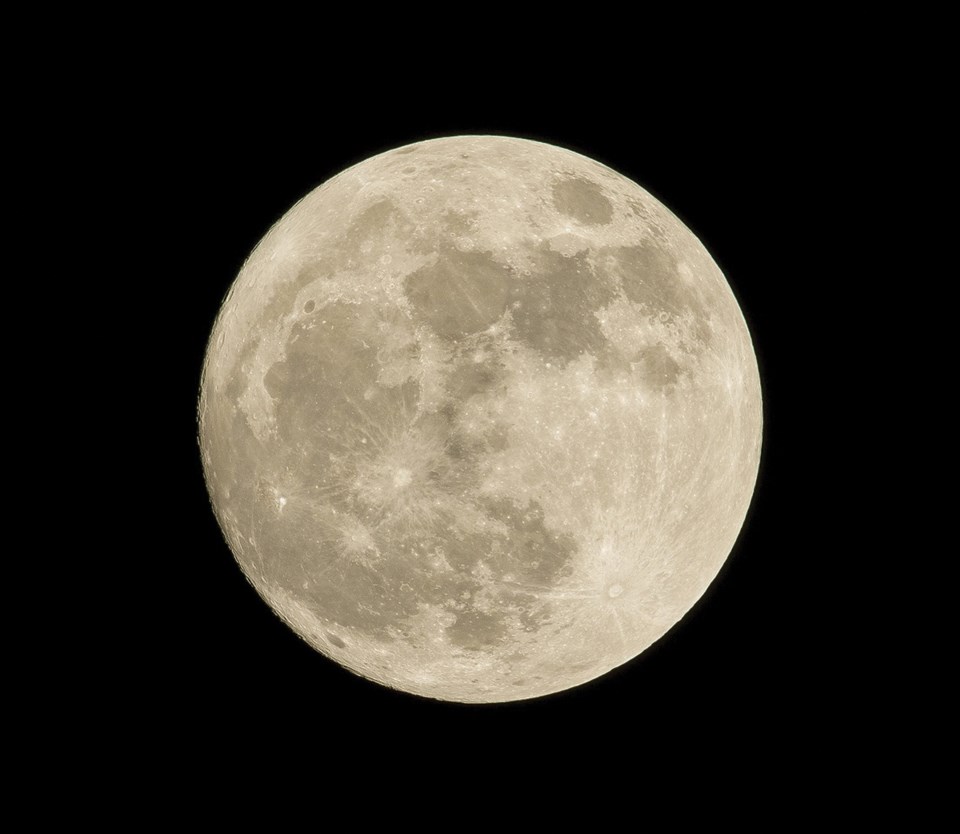I promise – no more Orion. First, there are some nice planetary conjunctions in the east before sunrise and the best evening apparition of Mercury for us this year.
As April begins, all five visible planets are west of the sun, barely. Mercury goes into superior conjunction (behind the sun) on April 2 but the rest are all west of the sun.
At 0600 on April 1 you’ll see three planets about 6 degrees above the SE horizon: a brilliant Venus, a fainter Saturn about two degrees to the right and a faint pinkish Mars about two degrees right of Saturn. Binoculars may help in finding the last two. While Earth, Venus and Mars are all inner planets going around the sun, Saturn is much farther out and moves more slowly. It will appear to move west (right) relative to Venus and Mars and will pass Mars on April 4/5. By April 15, Saturn will be twice as far west of Venus as Mars is and by then Jupiter begins to appear very low in the SE just after 0530. With a clear horizon and no clouds, you’ll see Jupiter, Venus, Mars and Saturn in a line slightly up and west. They’ll all move daily and will be joined by a slim waning crescent Moon from April 24 through 27 and on April 30, Jupiter and Venus will have a very close conjunction about half a degree apart, well within the same field of view in binoculars.
While all this is going on before sunrise, Mercury will be climbing in the WNW after sunset as early as April 12 by about 2045. It will climb higher all month and appear slightly later each day as the days get longer.
For the rest of this article the main focus will be on observing our moon. Coincidentally, New Moon occurs early April 1 and the next one late on April 30, so the lunar and calendar months are in synchrony. Counterintuitively, the full moon is not the best time to see most of the lunar features; you can see all the maria and the rays spread out from the young crater Tycho but the rest are best viewed when they’re near the terminator – the line between the sunlit and dark halves of the moon. The vertical relief of lunar features becomes much more obvious and dramatic when you’re looking at something where the sun is near the lunar horizon. It takes about 14 days for this line to move from the right side across to the left side when the moon becomes full. After that, you can watch in reverse as the shadow creeps across the moon from right to left until it’s a New Moon again.
The following is a sample of features visible in binoculars:
April 4/5: Mare Crisium and Mare Fecunditatus at about 4 – 5 o’clock plus the “Gang of Four” craters – Langrenus, Vendelinus, Petavius and Furnerius.
April 7: Craters Theophilus, Cyrillus, Catherine, the Altai Scarp that arcs down to crater Piccolomini, all below and left of Mare Tranquilitatis, where Neil and Buzz landed in 1969. You can actually see this site with binoculars as long as you’re within five miles or so of the lunar surface.
April 10: craters Tycho with its rays and Clavius at about the 6 o’clock position near the bottom of the moon, as well as crater Plato at about 12 o’clock near the upper edge of the moon.
April 11: Crater Copernicus in a maria with a prominent ray system and central peak.
April 13: Craters Kepler and Aristarchus, both bright craters below and left of Copernicus.
One of the best sources of basic information is on the RASC website at: https://rasc.ca/observing/explore-the-moon-observing-certificate. You can download the 8-page .pdf with a list of features and reference map – all in more detail and better written than this article can manage. I highly recommend it.
For information of the Astronomy Club’s next meeting – Zoom or otherwise – on April 8 please check out the club website at: https://sunshinecoastastronomy.wordpress.com/ which will have information on the speaker and topic and how to register for the meeting the week prior.



